A rod closing the circuit shown in Fig moves along a U shaped wire at a constant speed v under the action of the force F. The circuit is in a uniform magnetic field perpendicular to the plane. Calculate F if the rate of heat generation in the circuit is Q.
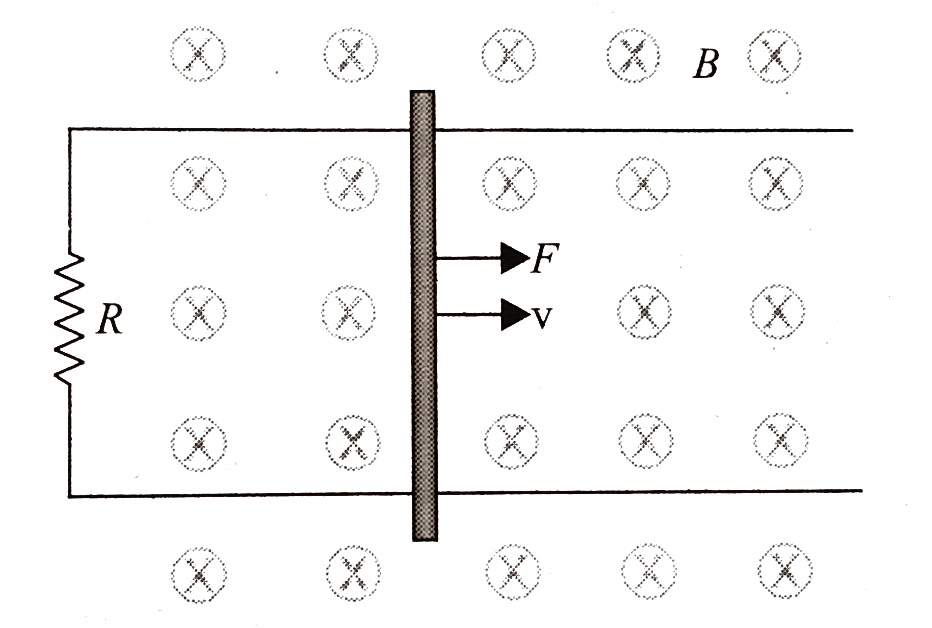
F=Qv
F=Qv
F=vQ
F=√Qv
The correct Answer is:B
Q=EI=(Blv)I=Fv=F=Qv.
Topper's Solved these Questions
- MISCELLANEOUS VOLUME 5BOOK - CENGAGE PHYSICSCHAPTER - MISCELLANEOUS VOLUME 5EXERCISE - Multiple Correct
34 Videos
- MISCELLANEOUS VOLUME 5BOOK - CENGAGE PHYSICSCHAPTER - MISCELLANEOUS VOLUME 5EXERCISE - Linked Comprehension
84 Videos
- MISCELLANEOUS VOLUME 3BOOK - CENGAGE PHYSICSCHAPTER - MISCELLANEOUS VOLUME 3EXERCISE - True and False
3 Videos
- Moving charges and magnetismBOOK - CENGAGE PHYSICSCHAPTER - Moving charges and magnetismEXERCISE - Question Bank
20 Videos
Similar Questions
A rod closing the circuit shoew in the figure moves along a LI- shaped wire at a constant speed v under the action of the force F . The circult is in a unifron magnetic field perpendicluar to the plane . Calculate F if rate of heat generation in the circuit is Q.
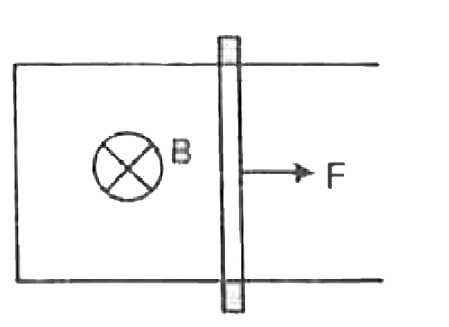
View SolutionImagine a would where free magnetic charges exist. In this world, a circuit is made with a U shape wire and a rod free to slide on it. A current carried by free magnetic charges can flow in the circuit. When the circuit is placed in a uniform electric field. E perpendicular to the plane of the plane of the circuit and the rod is pulled to the right with a constant speed v, the "magnetic EMF" in the current and the direction of the corresponding current. arising because of changing electric flux will be (l is the length of the rod and c is speed of light).
View Solution
Knowledge Check
In the circuit shown in Fig. A conducting wire HE is moved with a constant speed v towards left. The complete circuit is placed in a uniform magnetic field →B perpendicular to the plane of circuit inwards. The current in HKDE is
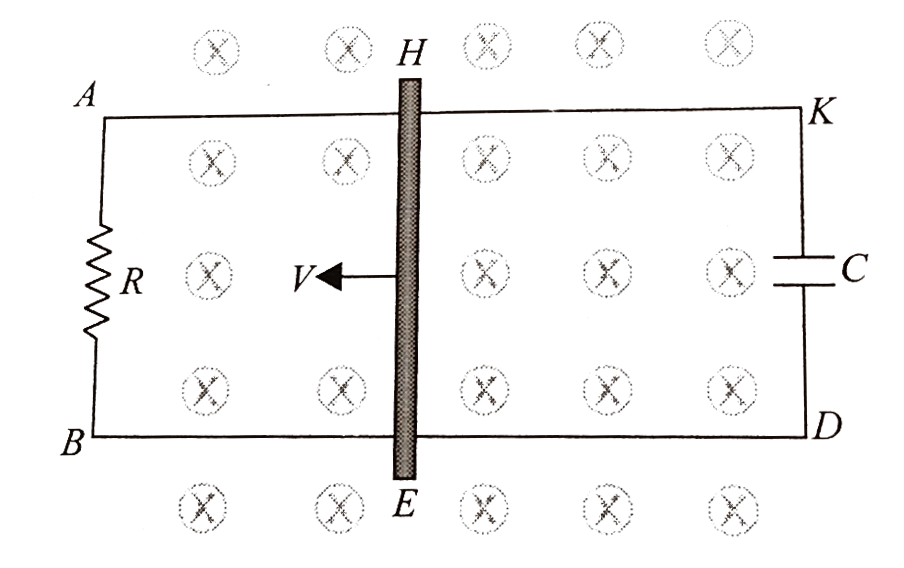 AclockwiseBanticlockwiseCdirection will change with timeDzero
AclockwiseBanticlockwiseCdirection will change with timeDzeroA horizontal wire is free to slide on the vertical rails of a conducting frame as shown in figure. The wire has a mass m and length l and the resistance of the circuit is R. If a uniform magnetic field B is directed perpendicular to the frame, the terminal speed of the wire as it falls under the force of gravity is
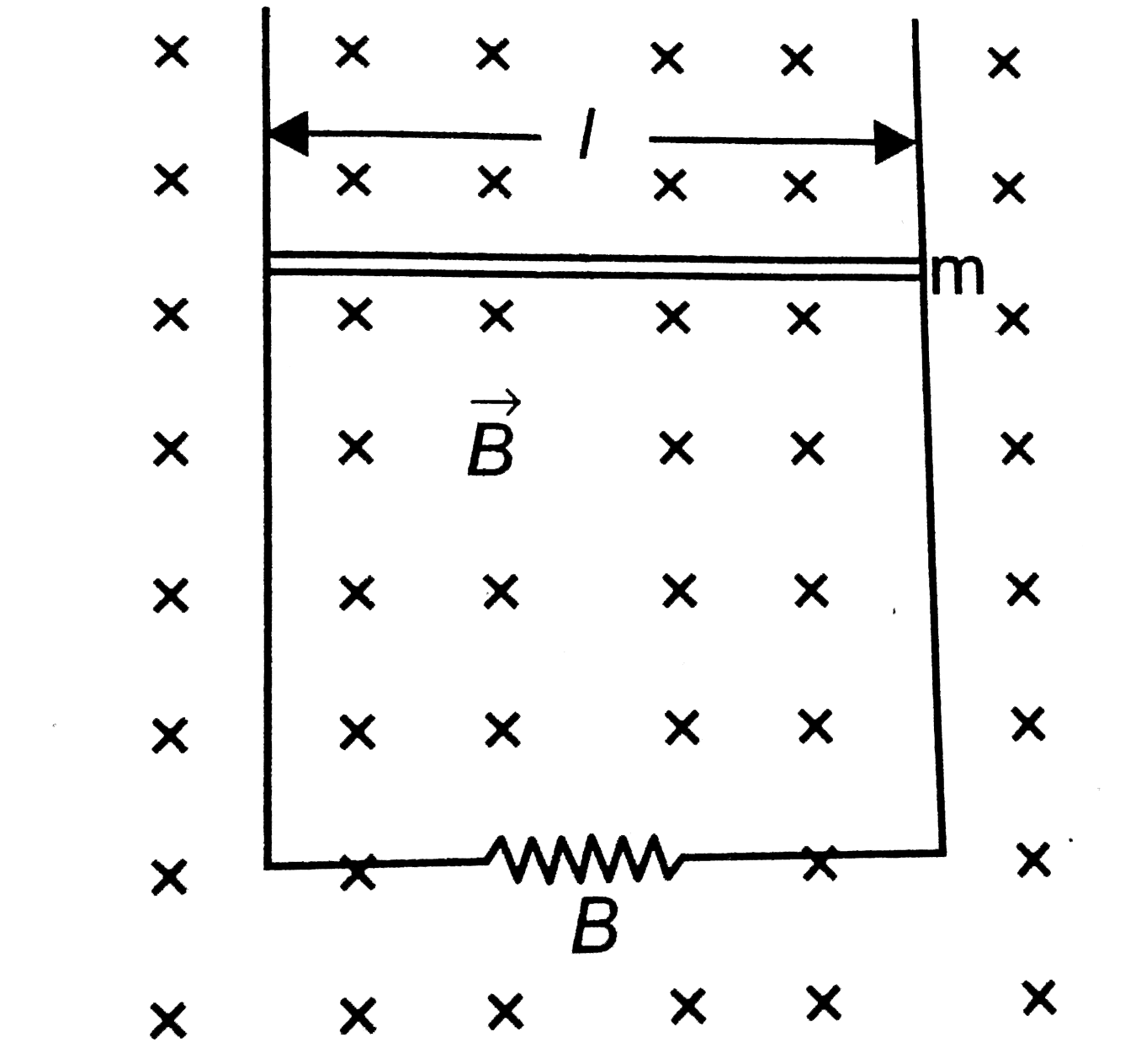 AmgRBlBmglBRCB2l2mgRDmgRB2l2
AmgRBlBmglBRCB2l2mgRDmgRB2l2Imagine a would where free magnetic charges exist. In this world, a circuit is made with a U shape wire and a rod free to slide on it. A current carried by free magnetic charges can flow in the circuit. When the circuit is placed in a uniform electric field. E perpendicular to the plane of the plane of the circuit and the rod is pulled to the right with a constant speed v, the "magnetic EMF" in the current and the direction of the corresponding current. arising because of changing electric flux will be (l is the length of the rod and c is speed of light).
AvEl clockwiseBvEL counterclockwiseCvElc2 clockwiseDvElc2 counterclockwise
Consider the sliding wire circuit shown in . The wire slides at constant speed and the plane of the circuit is perpendicular to a uniform magnetic field. Show that the induced emf is given by E=Blv2t/D foe 0<t<D/v What is the expression for the emf for t>D/v?
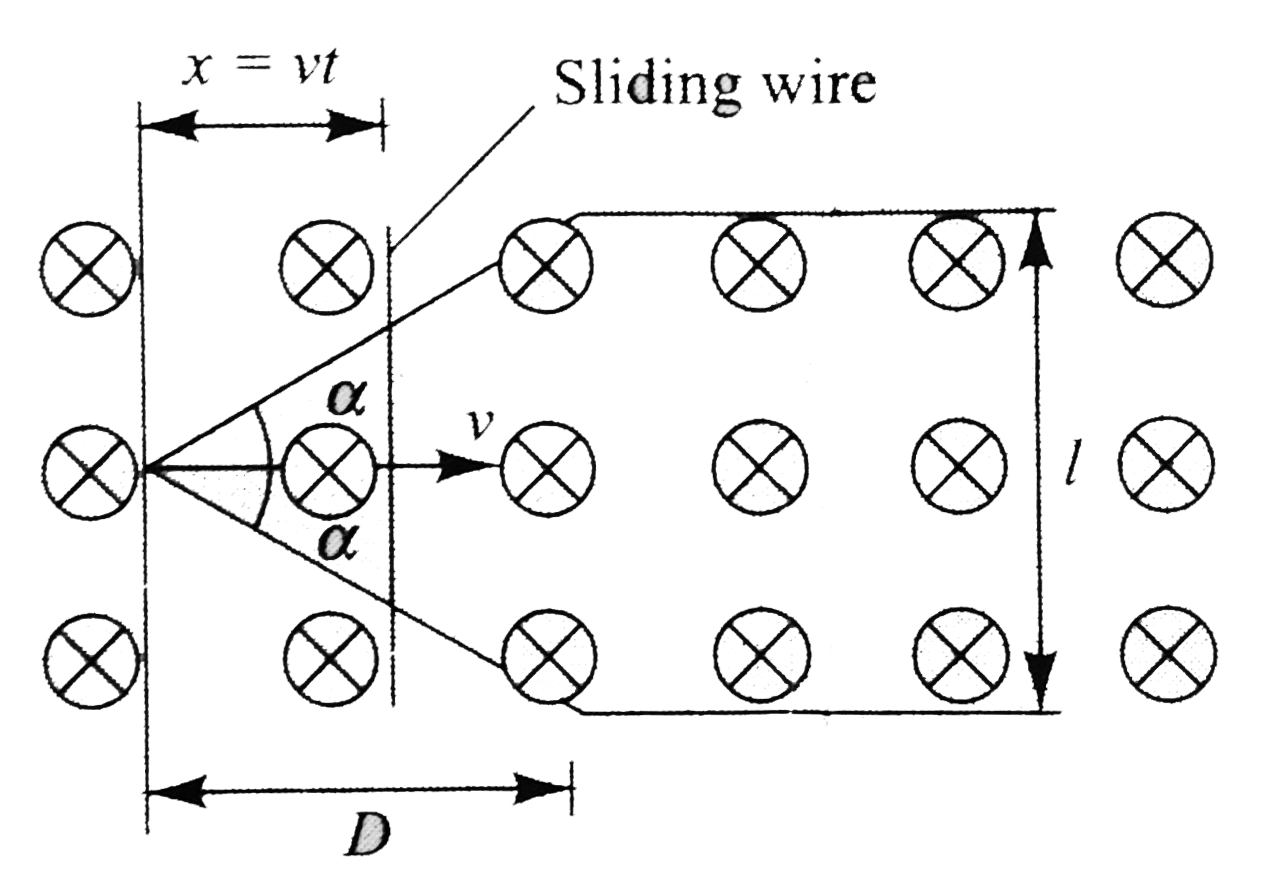
View SolutionThe conducting rod ab shown in figure makes contact with metal rails ca and db. The apparatus is in a uniform magnetic field 0.800T, perpendicular to the plane of the figure.
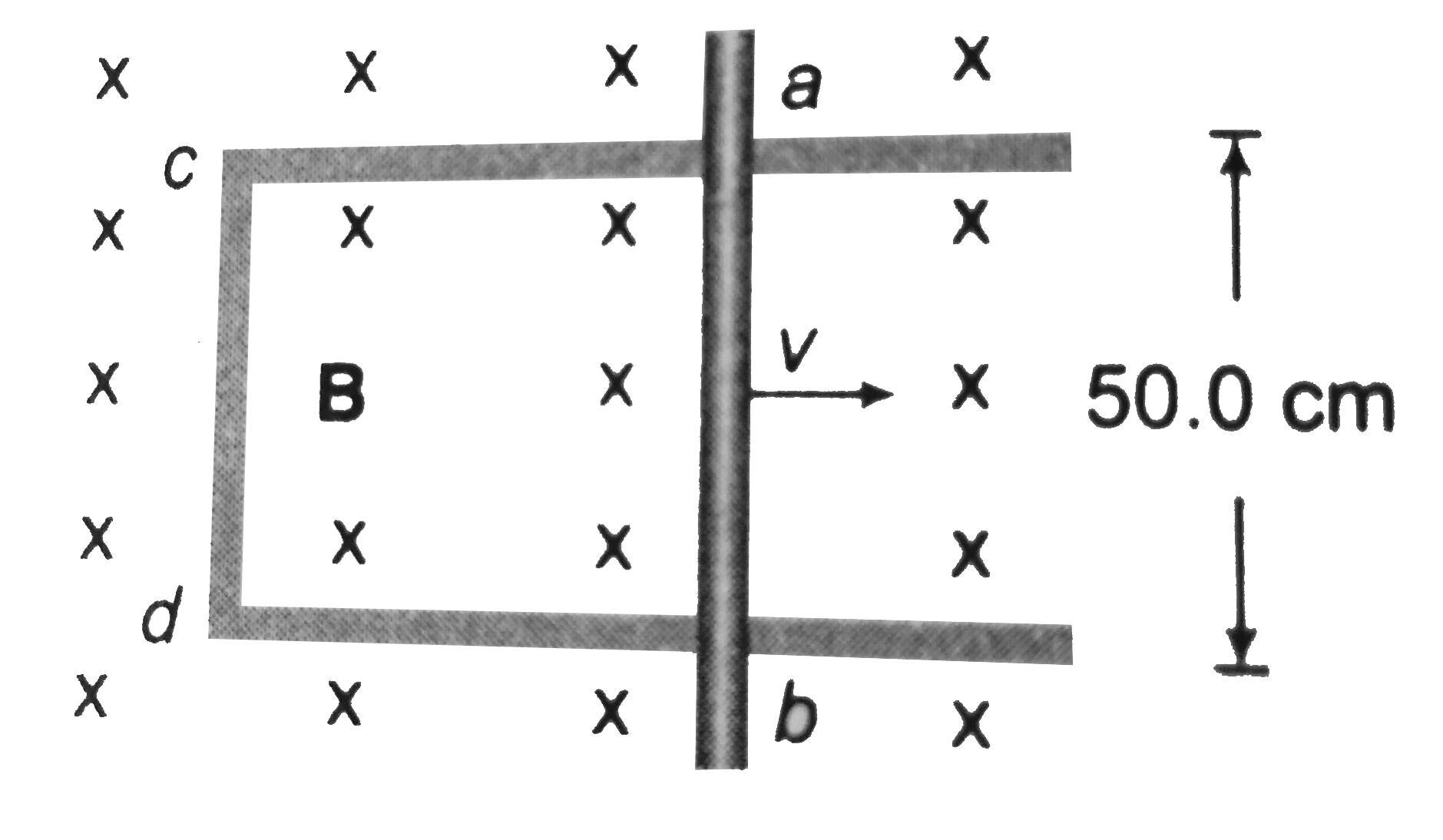
(a) Find the magnitude of the emf induced in the rod when it is moving toward the right with a speed 7.50m/s.
(b) In what direction does the current flow in the rod?
(c) If the resistance of the circuit abdc is 1.50Ω (assumed to be constant), find the force (magnitude and direction) required to keep the rod moving to the right with a constant speed of 7.50m/s. You can ignore friction.
(d) Compare the rate at which mechanical work is done by the force (Fu) with the rate at which thermal energy is developed in the circuit (I2R).
View SolutionA wire KMN moves along the bisector of the angle θ with a constant velocity v in a uniform magnetic field B perpendicular to the plane of the paper and directed inward. Which of the following is correct?
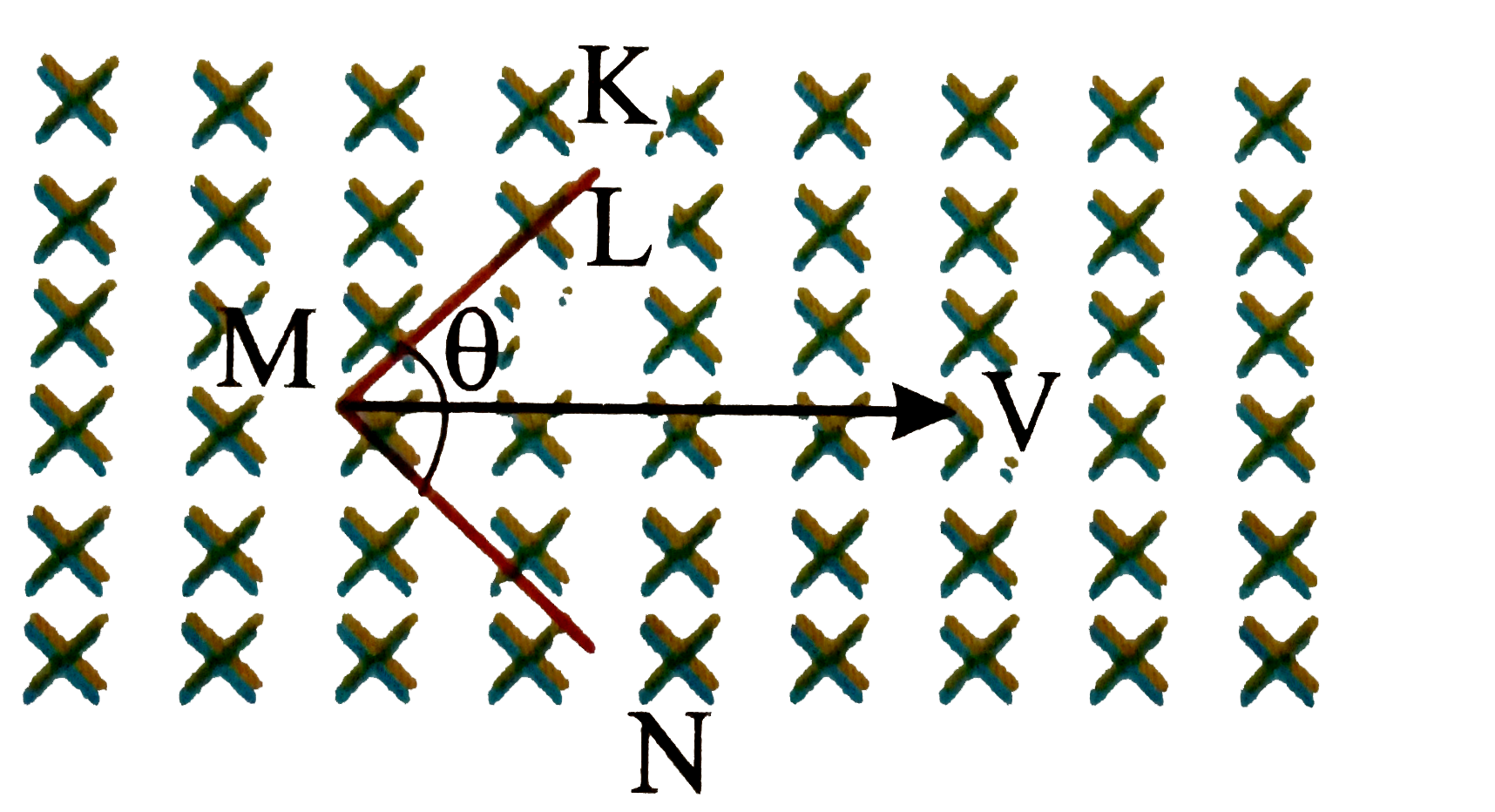
View SolutionIn an ac circuit shown in fig , the supply voltage has a constant rms value v but variable frequency f. At resonance, the circuit
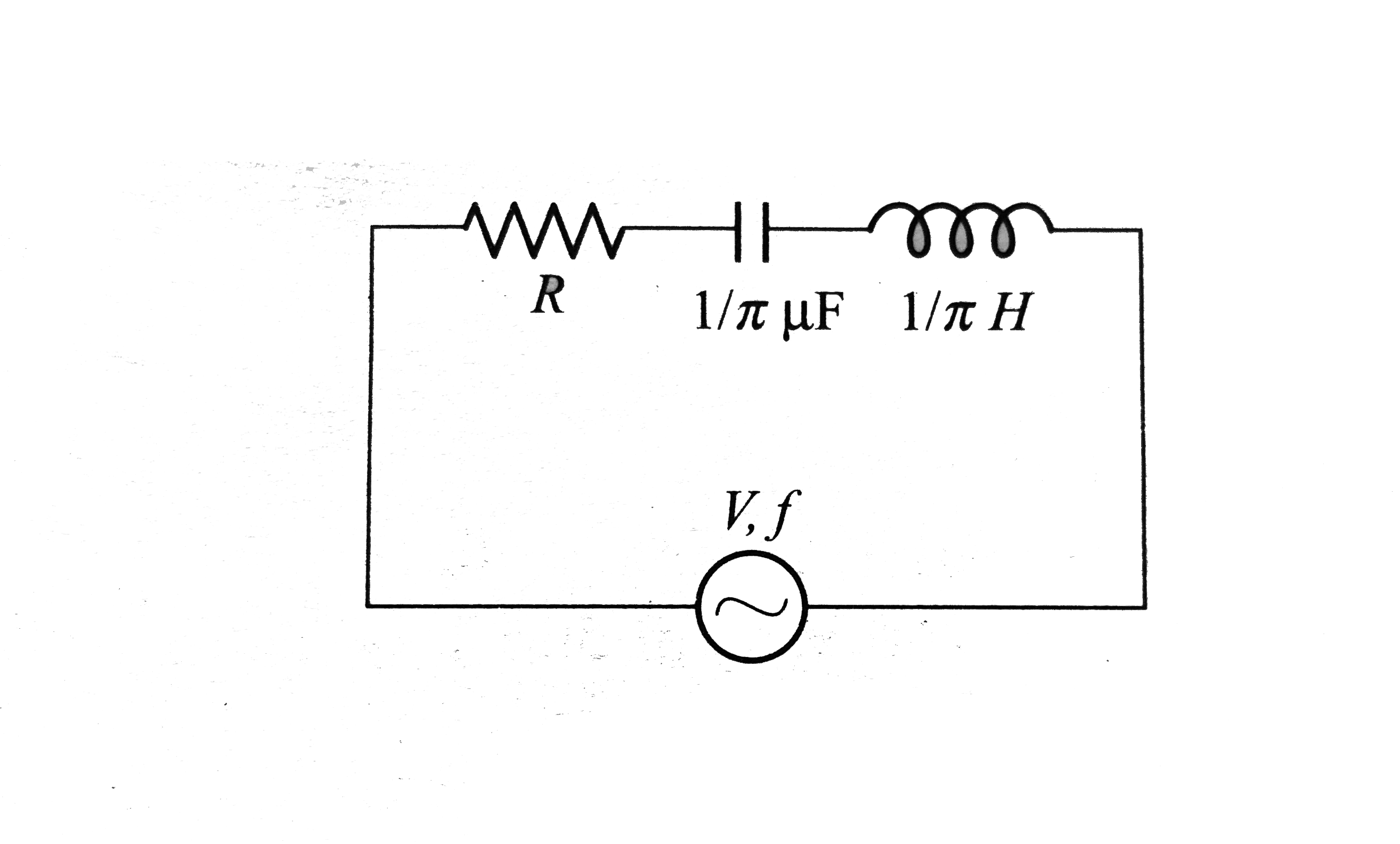
View SolutionA particle of mass M moves with constant speed along a circular path of radius r under the action of a force F. Its speed is
View Solution